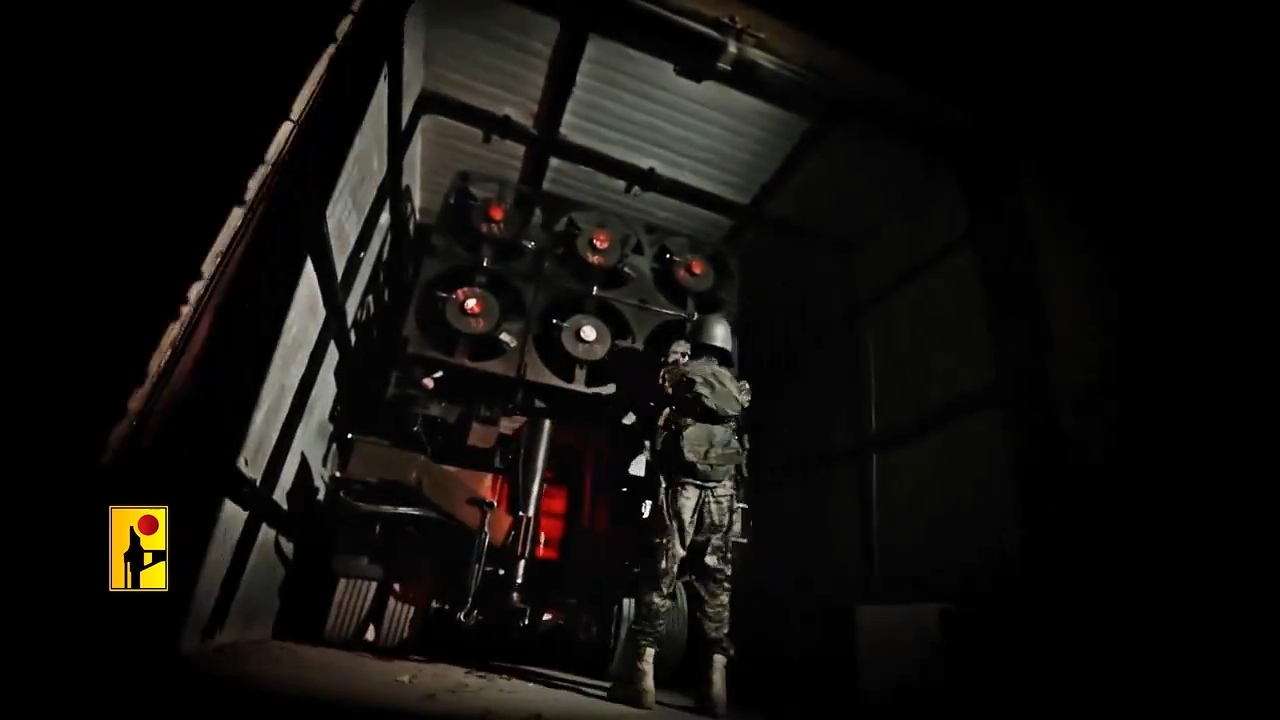(VIDEO) Hezbollah Reveals Underground Bunker Complex “Imad 4”, Stern Warning to Israel
(VIDEO) In a four-minute video produced by Hezbollah's own media wing, titled "Our Mountains are our Storehouses," a complex underground bunker system is depicted, set in a vast area. The footage also shows armed Hezbollah members patrolling the area on motorcycles.
(DEFENCE SECURITY ASIA) – In what is described as a stern warning to Israel, the Hezbollah militant group has released a video showcasing its underground bunker facilities used for storing and launching rockets and missiles against Israel.
The four-minute video, titled “Our Mountains are our Storehouses,” was produced by Hezbollah’s media wing.
It reveals a complex underground bunker system, set in a vast area, where armed Hezbollah members are seen patrolling on motorcycles.
The underground facility, believed to be located within a mountain in Lebanon, is named “Imad 4” in honor of Hezbollah commander Imad Mughniyeh, who was killed in a car bombing in Damascus in 2008, an attack widely attributed to Israel.
The video hints that Hezbollah may have additional underground complexes beyond “Imad 4.”
In addition to showcasing armed personnel, the footage also displays trucks transporting missiles within the facility, ready to be launched at any moment.
The voice of Hezbollah’s Secretary-General, Hassan Nasrallah, is heard in the video, stating that the militant group possesses missiles capable of accurately striking targets if Israel wages war against Lebanon.
“Israel will face a decisive moment and a reality it did not expect,” Nasrallah warns.
“The targets are within our reach, the coordinates are in our hands, and these missiles are deployed with utmost secrecy.”
Al-Manar TV, which has close ties to Hezbollah, described the video as a “clear message that the militant group is prepared to confront its primary enemy, Israel.”

Hezbollah, established in the 1980s, remains the only Lebanese armed group permitted to retain weapons following the end of Lebanon’s civil war in 1990.
The group continues to stockpile missiles, even as its members are sent to fight in Syria, and receives the latest weaponry from its main supporter, Iran.
The release of the footage of one of Hezbollah’s most critical military facilities comes as the group vows to avenge the death of its commander, Fuad Shukr, who was killed in an Israeli airstrike on his office in southern Lebanon on July 30.
Fuad Shukr, also known as “Haj Mohsen,” was the second-in-command of Hezbollah, just behind Hassan Nasrallah.
He was killed when Israeli forces targeted him in Haret Hreik, a neighborhood in southern Beirut known to be a Hezbollah stronghold, housing several buildings reportedly occupied by leaders of the Lebanese militant group.

Shukr was a top military commander, having taken over Hezbollah’s military wing after the assassination of his predecessor, Imad Mughniyeh, several years ago.
The United States had also placed a $5 million bounty on Shukr, accusing him of playing a key role in the 1983 bombing of a U.S. Marine barracks in Beirut, which killed 241 American service members.
Hassan Nasrallah has repeatedly threatened to strike Israel, with his latest speech last week emphasizing plans to launch a “severe” and “effective” response to Shukr’s killing, despite potential repercussions.
The situation in the Middle East has become increasingly volatile and precarious over the past few months. Just days after Shukr’s assassination, Israel was also accused of launching an attack that killed Palestinian leader Ismail Haniyeh, who was in Tehran at the time.
Haniyeh was in Tehran to attend the inauguration of Iran’s new president, Masoud Pezeshkian. In response to the killings of Shukr and Haniyeh, Iran, Hezbollah, and other Iranian proxy groups in the Middle East have threatened to launch large-scale attacks against Israel and U.S. military bases in the region. — DSA



Comments are closed.